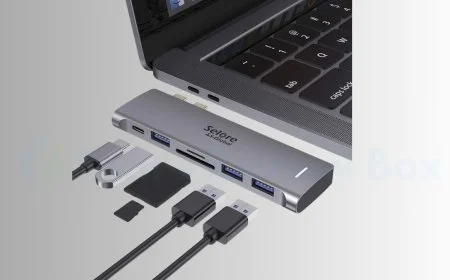How to Boot from USB on ASUS Laptop - Step-by-Step Guide
Learn how to boot from USB on your ASUS laptop with our easy step-by-step guide, ensuring a smooth setup process.

Key Takeaways
- To boot from a USB, you’re essentially starting up your computer using an operating system that is located on that USB drive. This technique is perfect for system recovery, installing new operating systems or trying out different OS alternatives.
- To get ready a bootable USB, first format the thumb drive properly. Then, download the ISO file suitable for your system and utilize trusted tools such as Rufus to prepare the bootable device.
- Press the right key—usually F2, ESC, or DEL—immediately after powering on the device. Find the Boot option, USB drive and adjust the boot order to have the USB drive take precedence.
- Before you exit the BIOS, don’t forget to save changes. This will make sure that your laptop reads that your USB drive is the first kick device.
- If you have problems make sure the usb drive is compatible and bootable. Next, check your BIOS settings or restore them to default settings if necessary. You might need to disable Secure Boot for certain OSes as well.
- If you follow these steps closely, you will have no problems installing, repairing or testing an operating system using a USB drive.
If you want to boot from a USB on an ASUS laptop, you’ll first need to get into the BIOS or UEFI settings. Shut the laptop down, then power it back on while holding the F2 key.
After you have made it into the BIOS, go into the Boot menu and set your USB drive as the first boot device. Make sure the USB is fully inserted and has a proper bootable file system.
Save the changes and reboot the laptop. That’s it, it will now boot from your USB drive. This approach works for all ASUS laptops.
It allows you to do things like install a new operating system or run diagnostics. If you follow these steps, it’ll be a smooth, seamless, and efficient process with no special equipment or knowledge required.
What Is Booting from USB
Definition and Purpose
Booting from USB simply refers to booting your computer with an OS located on a portable USB flash drive. This technique skips the internal hard drive. This process skips the main storage altogether, letting you boot an OS directly off the USB.
It’s especially handy for machines that lack a functional operating system, or when you’re in the process of installing or repairing one. If your laptop’s operating system ever crashes, don’t be alarmed! Booting from a USB lets you access system recovery tools, as well as reinstall the system.
It’s equally important for booting new operating systems without having to depend on software already installed on the machine. Knowing how USB booting works increases your effectiveness in troubleshooting and maintaining your system. This is particularly important, though, when you have a hardware or software malfunction.
Common Use Cases
The primary use case of booting from USB is to install a new operating system, such as Windows or a flavor of Linux. Having quick access to diagnostic tools is invaluable when your primary OS goes on the fritz. This has made it a very favorable choice of OS for system recovery.
USB booting is perfect for trying out live operating systems without changing your laptop’s existing configuration. For example, you can run lightweight versions of Linux straight from a USB. This is particularly handy on older hardware that has a hard time meeting the modern operating system demands.
Benefits of Booting from USB
The most obvious advantage has to be portability. A USB drive is small enough, allowing you to have several different operating systems in your pocket. This mobility is particularly useful for IT professionals, or users who operate on multiple machines.
Second, booting from a USB is much faster than running from DVDs. That’s only because USB 3.0 and above provide much faster transfer speeds. Finally, it allows you to run lighter OS versions natively. This offers aging hardware a new lease on life with no permanent deployments required.
Preparing Your USB Drive
Preparing your USB drive
Before you get started with the actual configuration, you’ll want to make sure your USB drive is properly prepared for booting. Here’s a simple breakdown:
- For starters, make sure your drive is formatted as FAT32 or exFAT. This step is important because firmware needs FAT32 formatting in order for the firmware to identify the drive as bootable.
- If you have non-live files on the drive, save them in advance to not lose important data.
- Tools like Rufus make the process seamless. Rufus makes drives bootable in a way that’s compatible with Secure Boot, supports GPT, and UEFI.
- Launch Rufus, select your USB drive, select your ISO file, set the partition scheme, and start the process.
- Attention Linux users! You will need to copy some files, such as the EFI loader, from the ISO to your drive manually.
Choose a Compatible USB Drive
Choose a USB drive with a minimum of 8GB of space. Smaller drives such as 4GB will no longer be viable due to the size of modern OS images.
If installation speed is a concern, USB 3.0 drives will be the preferred choice for quicker installations. Additionally, make sure the drive is compatible with your intended OS to avoid compatibility hiccups down the road.
Download the Required ISO File
First, download the appropriate ISO file from official sources for your operating system. This guarantees you are using a safe, reliable copy.
After downloading the image, verify that it is what you expect using methods such as checksums. Store the ISO file in a location you can easily access because you will need it during the creation of the bootable USB.
Create a Bootable USB Drive
Now that the ISO file is prepared, it’s time to use Rufus to complete the process. Choose your USB drive, choose the ISO, set the partition scheme to GPT, and choose UEFI if needed.
When you’re all finished, allow Rufus to finish the process and safely eject the drive.
Accessing the Boot Menu on ASUS Laptop
Restart and Enter BIOS Setup
If you want to access the BIOS settings, first begin by rebooting your ASUS laptop. As the device is powering on, press the key to the boot menu quickly. The good key for most ASUS models is usually Esc, F2, F8, or Del. Timing really is everything in this case.
Pressing the key down too late will instead boot the operating system. For some Notebooks, All-in-One PCs and Gaming Handhelds, hold down the Esc key. Then, press the Power button to check if it works. When you are successful, the BIOS/UEFI interface will appear, providing access to boot options.
Locate the Boot Menu Option
Inside the BIOS setup, use the arrow keys to move to the "Boot" tab. Search for settings named Boot Order or Boot Option. These configurations dictate the order of bootable devices, including USB drives or built-in storage.
If you’re still not seeing the settings, check additional tabs or areas. For advanced access, pressing F7 or clicking on “Advanced Options” can show other selections. Getting used to output labels and output layout will help you make future changes.
Navigate Through BIOS Settings
Quick navigation is essential in the BIOS. Use the arrow keys to navigate and follow prompts on screen to make any adjustments. Make sure to note down the current settings before making any changes.
This step is useful as a fallback if you need to restore defaults. Knowing what each section means helps make the safest and most efficient changes to boot order, such as when booting from USB drives.
Changing Boot Order in BIOS
Access the Boot Priority Section
To get started, first you need to enter your computer’s BIOS setup menu. To access BIOS and change your boot order, press and hold the F2 key while turning on your Asus laptop. Depending on your model, Delete or F9 may be effective.
Upon entering, navigate to the Boot Priority section, typically found under a tab marked “Boot” or “Advanced.” This part determines the order that devices will be checked to find a bootable medium.
For instance, if a hard drive is set to boot first, the laptop will boot from the hard drive instead of the USB. This means that in order to boot from a USB drive, it must take priority over the other devices in this list.
Please note, if the USB is not configured for UEFI mode it may not show up here.
Select USB Drive as First Option
Go to the Boot Priority list and find your USB drive. Select it with the arrow keys and use keys + / - or F5/F6 to move it to the first position.
So for example, if your existing order has the internal drive as the first entry, move your USB drive to take its place. Make sure the USB is set as the first boot device again before proceeding to step 7.
Save Changes and Exit BIOS
Navigate to the Save & Exit tab in the BIOS menu. Select the option to save your changes (usually by pressing F10 or selecting “Save & Exit”).
When the confirmation prompt appears, confirm to save the settings. From now on, your system will try to boot from the USB drive first.
Booting from USB on ASUS Laptop
To begin, plug the bootable USB drive into any USB port on your ASUS laptop. Ensure the USB is correctly set up as bootable, this is the most common culprit. Tools like Rufus are very useful for creating a bootable USB, particularly for Windows 8/8.1 in UEFI mode.
Turn off your laptop and when you power it back on, press and hold the ESC key. This will bring you to the BIOS setup menu, from which you can change the appropriate settings.
In the BIOS settings you might need to enable Legacy Boot mode if the USB isn’t UEFI bootable. Navigate to the Boot tab and find the Compatibility Support Module (CSM) setting. Turn it on if you plan on using a USB set up for BIOS booting.
Second, go to the Security tab and turn off Secure Boot Control. This step is very important because Secure Boot is capable of preventing externally connected devices from booting. After making these changes, save and exit.
As soon as the laptop is rebooted, press the Boot Menu (ESC) key to enter the Boot Menu once more. Click the USB drive from the available list. Then hit Enter and follow the on-screen instructions to proceed with your installation or recovery.
If you format the USB correctly and make the necessary adjustments in BIOS, the installation process is seamless.
Troubleshooting Common Boot Issues
If your ASUS laptop boots into the operating system instead of USB, here’s the reason why. Here’s a step-by-step guide to troubleshooting and correcting these all too common issues.
Check USB Drive Compatibility
One – Check that your USB drive is the right brand/model for the laptop BIOS settings. Some ASUS laptops may have issues with older USB versions, so a USB 3.0 drive usually does the trick.
Try the USB drive on a different computer to ensure it is working. If it does work on other devices but not on your ASUS laptop, troubleshoot your BIOS settings and hardware. Your culprit might be lurking in there!
Using a USB drive that you already know works with similar systems will save you a lot of time debugging compatibility problems.
Ensure Proper Bootable USB Creation
Making a bootable USB may be simple, but it takes exact procedures. Use reliable software such as Rufus or Microsoft’s Media Creation Tool to burn the ISO file to the drive.
Check the integrity of the ISO file before doing anything else. Once you’ve created it, make sure you test the bootable USB on another device to make sure it works.
Badly generated files frequently cause the boot process to fail.
Disable Secure Boot in BIOS
In fact, some operating systems will refuse to boot at all if Secure Boot is turned on. Enter your BIOS settings and find the Secure Boot setting to disable it, typically found under the “Boot” or “Security” tab.
Uncheck it, and click Save changes at the bottom of the page. This patch is very important for those systems that need support for both EFI and Legacy boot modes.
Be sure to exit BIOS properly to make the changes take effect.
Restore Default BIOS Settings if Needed
When nothing else works, a full BIOS reset to default settings can resolve any misconfigurations. For example, to reset your BIOS settings, access the BIOS and select “Load Optimized Defaults.
This takes care of most boot issues, because 70% of the time, something you did previously is the source of errors. Be sure to document any custom settings before you reset them, so you can reset them afterward if needed.
Conclusion
Booting from a USB on an ASUS laptop is easier than you think once you learn how. You must prepare your USB drive properly! After you learn these boot menu and BIOS settings, booting from USB will be a breeze. This procedure allows you the opportunity to install an entirely new operating system. It allows you to use diagnostic tools, without relying on the internal storage.
If problems do arise, most problems can be resolved by troubleshooting in no time. By taking the right approach, you can have a pleasant experience and help your laptop’s health and performance for years to come.
Embrace the freedom that comes with USB booting. It’s a great skill to have and opens up lots of new convenience and control over your device. Give it a shot and open up a whole world of potential.
Frequently Asked Questions
What does "booting from USB" mean?
Booting from USB means starting your laptop using an operating system or software stored on a USB drive, instead of the internal hard drive. This is particularly helpful for installing a new operating system, running diagnostics or repairing your system.
How do I prepare a USB drive for booting?
- Prepare the USB drive by formatting it properly. After downloading the ISO, use the Rufus or the Windows Media Creation Tool to create a bootable drive. Just ensure that when you boot your laptop from USB, the USB drive is loaded with the necessary OS/software you need.
How do I access the boot menu on an ASUS laptop?
To open the boot menu, restart your laptop and hit the Esc key several times at startup. This will open the boot menu, where you can choose the USB drive as the boot device.
What is the BIOS, and why should I change the boot order?
The BIOS (Basic Input/Output System) is what controls the settings for your hardware. Adjusting the boot order ensures that the USB drive is prioritized over the internal hard drive. This will make sure the laptop boots from the USB first.
What keys do I press to enter BIOS on an ASUS laptop?
On most ASUS laptops, press the F2 key repeatedly as the laptop is starting up to access the BIOS setup. Other models might need to use another key, such as Del.
Why won't my ASUS laptop boot from USB?
If it’s not working, check that your USB drive is formatted and bootable. Make sure the boot order in BIOS lists the USB drive first. In addition, check that the USB port is working properly.
Can I use any USB drive to boot my ASUS laptop?
Not just any USB will do. Select a device with an appropriate minimum storage built-in based on your OS preferences. Just remember to do it properly and ensure it’s a bootable USB.
What's Your Reaction?







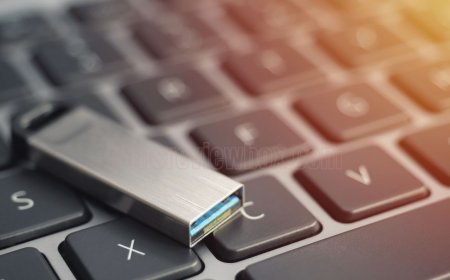
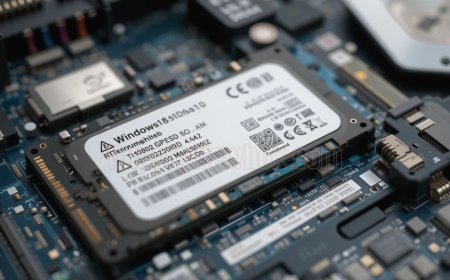

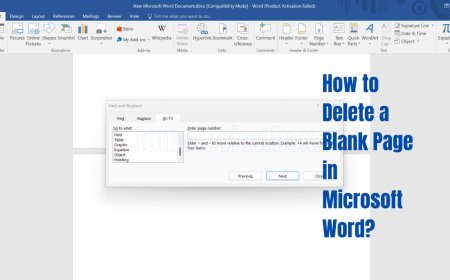









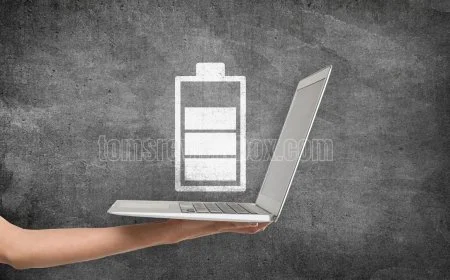













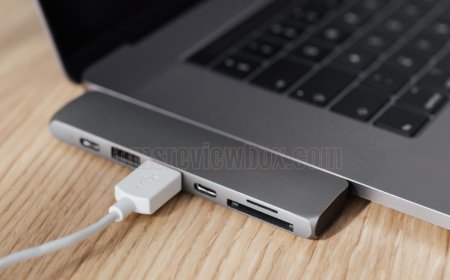




![MacBook Pro M5: All the features and specs you need to know [LEAKS REVEALED]](https://tomsreviewbox.com/uploads/images/202502/image_430x256_67bd6d7cd7562.jpg)
